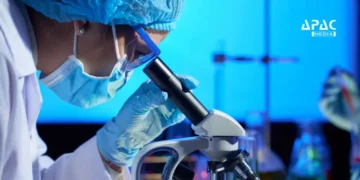New Delhi: The Central Government has revealed that the National Supercomputing Mission (NSM), launched in 2015, has significantly enhanced India’s high-performance computing (HPC) capabilities by deploying 34 supercomputers with a total compute capacity of 35 Petaflops as of March 2025.
The initiative, led jointly by the Ministry of Electronics and Information Technology (MeitY) and the Department of Science and Technology (DST), is implemented by the Centre for Development of Advanced Computing (C-DAC) and the Indian Institute of Science (IISc), Bengaluru.
The supercomputers have been installed at premier institutions, including IISc, several IITs, and academic and R&D centres in Tier-II and Tier-III cities. These systems have achieved an average utilisation rate of over 85 per cent, with many operating above 95 per cent.
They have facilitated research in critical domains such as climate modelling, drug discovery, disaster management, fluid dynamics, and energy security.
So far, over 10,000 researchers, including more than 1,700 PhD scholars, have accessed these systems via the National Knowledge Network (NKN), which links institutions over a high-speed network.
To date, over one crore compute jobs have been completed, and more than 1,500 research papers have been published through these systems. In addition, over 22,000 individuals have been trained in HPC and artificial intelligence (AI) through dedicated training centres in Pune, Kharagpur, Chennai, Palakkad, and Goa. Startups and MSMEs are also leveraging these computing resources for innovation.
The centre also revealed that a major milestone under NSM is the indigenous development of HPC servers called “Rudra” and a locally built software stack.
In 2024, Prime Minister Narendra Modi dedicated three PARAM Rudra supercomputers to young researchers, deployed at institutions in Pune, Delhi and Kolkata. Another major installation is IISc Bengaluru’s PARAM Pravega, a 3.3 Petaflop supercomputer, the largest deployed at an Indian academic institution.
To support rapid data communication, C-DAC has developed the high-speed “Trinetra” network, currently implemented in phases. Trinetra-A, a 100 Gbps network, is functional in the PARAM Rudra system at C-DAC Pune, while the 200 Gbps Trinetra-B will be integrated into a 20 Petaflop system in Bengaluru.
Additionally, the government has initiated the AIRAWAT project, a national AI computing platform being built with a Proof of Concept of 200 Petaflops (scalable to 790 Petaflops).
AIRAWAT has already earned global recognition, ranking 75th in the Top 500 Global Supercomputers list in 2023.
NSM’s long-term vision includes achieving full indigenisation in supercomputing. Phase One focused on system assembly, Phase Two emphasised value addition and indigenous software, and Phase III is targeting complete local design and manufacturing.
For 2024–25, the government plans to add another 45 Petaflops of computing power.
To further strengthen NSM, the India Semiconductor Mission (ISM) is working to locally produce key components such as processors and accelerators, reducing reliance on imports and boosting efficiency and customisation.
It has been stated that as of now, Rs 1,874 crore has been allocated and utilised under NSM for infrastructure, research, training and mission management.













































































Discussion about this post